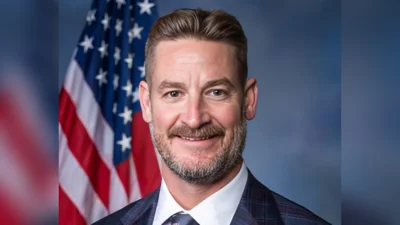According to the Sarasota Bay Estuary Program (SBEP) Sarasota Bay Ecosystem Health Report Card, Sarasota County's water quality has been improving since 2018. The report card tracks a combination of four chemical and biological indicators of water quality and ecosystem health. Each indicator gives us a different perspective about the extent to which high nutrient levels might be affecting area bays.
The annual SBEP report card was highlighted during the Sept. 13 Sarasota County Board of County Commissioners (BCC) under Commissioner Moran's reports, stating "in some cases, our water quality is the best its been in 15 years." Commissioner Moran represents the BCC on the Sarasota Bay Estuary Program Board.
The SBEP report card highlights continued improved water quality and health in Big Sarasota Bay, Roberts Bay, Little Sarasota Bay and Blackburn Bay.
| | |
What is the SBEP Sarasota Bay Ecosystem Health Report Card?
Water quality improvement is the basis of SBEP's mission to restore Sarasota Bay. Without good water quality, seagrass meadows cannot flourish, leaving little habitat for fish and wildlife. The Sarasota Bay Ecosystem Health Report Card tracks four bay health indicators and combines them into an overall, annual score for each of our five bay segments: Palma Sola Bay, Big Sarasota Bay, Roberts Bay, Little Sarasota Bay, and Blackburn Bay. The report card helps SBEP and partners prioritize monitoring and management actions.
What Does the Report Card Track?
- Total Nitrogen or TN: Nitrogen is an essential nutrient for life, but when nitrogen concentrations in estuaries are too high, algae blooms can result.
- Chlorophyll-a: Scientists measure chlorophyll-a to determine the amount of phytoplankton, or microscopic algae, in the water. Like nitrogen, some amount of phytoplankton is a good thing. Phytoplankton produce oxygen and provide food for filter-feeders like shellfish. However, too much phytoplankton can reduce the amount of light that reaches seagrass beds, thereby restricting their growth.
- Seagrass: The extent of seagrass meadows in Sarasota Bay is a good biological indicator of water quality. How clear or cloudy the water determines how deep seagrass meadows can grow. As water becomes clearer, in other words as transparency increases, seagrass meadows can expand into deeper water.
- Macroalgae: Also called seaweeds, macroalgae are important food and habitat for estuarine creatures. However, they can respond quickly to nutrient pollution by growing and shading out seagrass meadows. The bacteria that break down macroalgae blooms can also reduce oxygen levels in the water, which is dangerous for fish and other wildlife. Therefore, macroalgae blooms can be an indicator of poor water quality.
Every year, SBEP assigns each bay segment a score ranging from A to D based on the four ecosystem health indicators for that segment.
- A: All signs indicate healthy water quality; continue to monitor as usual.
- B: Most signs indicate healthy water quality; monitor carefully.
- C: One or more signs indicate concern; check for compliance with wastewater and stormwater permits, and plan for management actions.
- D: All signs indicate water quality degradation; take management actions.
How is the Bay Doing This Year?
Upper Bay Segments: SBEP reports that in 2021, most signs indicated good ecosystem health in Palma Sola Bay, Sarasota Bay, and Roberts Bay despite lingering impacts from severe red tides in 2016 and 2018 and Hurricane Irma in 2017. Big Sarasota Bay lost a significant amount of seagrass between 2018-2020, likely as an indirect result of the 2017 and 2018 red tides. However, other ecosystem health indicators suggest that conditions are improving.
Lower Bay Segments: SBEP identified the ecosystem health in Little Sarasota and Blackburn Bays appears to be on an upward trajectory, likely due to actions that have been taken to reduce wastewater discharges to these bays. SBEP expects this trend to continue as Sarasota County fulfills its commitment to invest in Advanced Wastewater Treatment upgrades at the Bee Ridge Wastewater Treatment Facility. Bay-wide, seagrass coverage in 2020 was at its lowest in over a decade, however, if water quality continues to improve in the coming years, seagrass meadows will recover.
Learn more about the Sarasota Bay Estuary Program by visiting sarasotabay.org or by calling 941-955-8085.
To learn more about Sarasota County's water quality initiatives visit scgov.net (keywords water quality) or call the Sarasota County Contact Center by dialing 3-1-1.
Original source can be found here.

 Alerts Sign-up
Alerts Sign-up